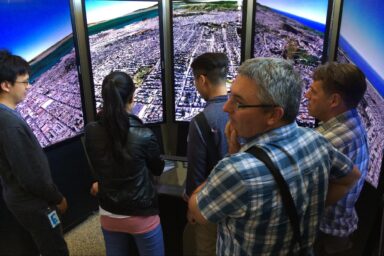PICKS are stories from many sources, selected by our editors or recommended by our readers because they are important, surprising, troubling, enlightening, inspiring, or amusing. They appear on our site and in our daily newsletter. Please send suggested articles, videos, podcasts, etc. to picks@whowhatwhy.org.
|
Listen To This Story
|
Mexico’s Costly, Half-Completed Maya Train Draws Few Riders (Maria)
The author writes, “The pet rail project of President Andrés Manuel López Obrador could wind up costing as much as $30 billion, is only half finished as he heads into the final 2 1/2 months of his term, and has wreaked major damage on the environment. But the most damning judgments on the Maya Train tourist line, which runs in a loop around the Yucatan Peninsula, are the ridership figures on about half the railway that is now open: only about 1,200 people per day use the train, according to government figures released Monday.”
A Brief History of Trump and Violence (Dana)
From The Nation: “The shooting at Donald Trump’s rally in Pennsylvania Saturday night is a chilling reminder of both the political tensions that roil today’s America and the dangers of a culture that increasingly fetishizes high powered weaponry. … To be absolutely clear, there is no politician in America today who has done more to stoke political violence than Donald J. Trump. And that is as true today as it was before the attempt on his life.”
US Media Coverage of Anti-Vax Disinformation Quietly Stops at the Pentagon (Gerry)
The author writes, “Canada-based news agency Reuters (6/14/24) revealed that the Pentagon, beginning in spring 2020, carried out a year-long anti-vax messaging campaign on social media. Reuters reported that the purpose of the clandestine psychological operation was to discredit China’s pandemic relief efforts across Southeast and Central Asia, as well as in parts of the Middle East.”
Here’s What the Court’s Chevron Ruling Could Mean in Everyday Terms (Laura)
The authors write, “The Supreme Court’s decision [in June] to limit the broad regulatory authority of federal agencies could lead to the elimination or weakening of thousands of rules on the environment, health care, worker protection, food and drug safety, telecommunications, the financial sector and more. The decision is a major victory in a decades-long campaign by conservative activists to shrink the power of the federal government, limiting the reach and authority of what those activists call ‘the administrative state.’ The court’s opinion could make it easier for opponents of federal regulations to challenge them in court, prompting a rush of new litigation, while also injecting uncertainty into businesses and industries.”
Why US Government May Still Do Business With Boeing, Even as a Felon (Reader Steve)
From The Seattle Times: “As Boeing continues to face the fallout from two fatal 737 MAX crashes roughly five years ago, the company now meets yet another question about its future. Could the Justice Department’s recent decision to offer Boeing a plea deal to resolve a criminal fraud charge curtail the company’s government contracts, including its billions in defense work? Legally speaking, it’s still not clear.”
From Burn Scar to Wetland (Russ)
From The Washington Post: “After wildfires destroyed Lahaina, the battle to restore an ancient ecosystem will shape the town’s future.”
Time Might Be a Mirage Created by Quantum Physics, Study Suggests (Sean)
The author writes, “Physicists have struggled to understand the nature of time since the field began. But a new theoretical study suggests time could be an illusion woven at the quantum level.”




